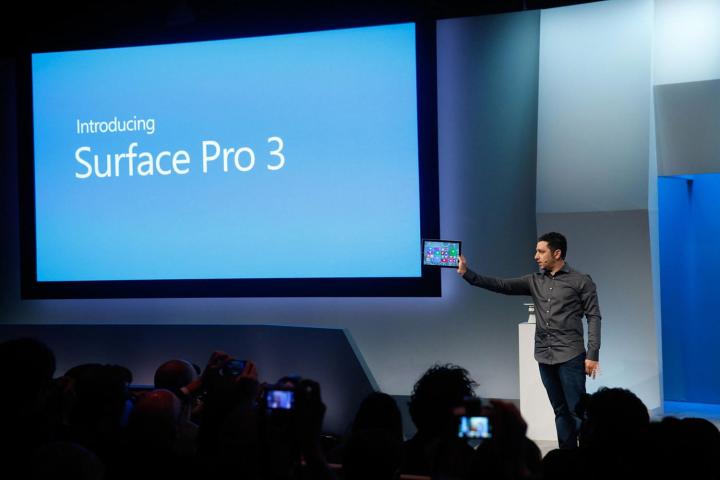
The original Surface — a stealth product for which there were no pre-launch expectations — was executed well given the number of masters it needed to serve. It had to be a showcase for Windows. It had to aid with the difficult transition between desktop and touch that Microsoft continues to wrestle with. And it had to clearly differ from the iPad, to showcase Microsoft’s innovation in devices, as well as the laptops and tablets that other PC companies were building.
Microsoft never had much interest in capturing the tablet market.
As Microsoft saw market results from the first generation of Surface, it saw that customers wanted the long battery life and form factor of the Surface RT but with the full backwards compatibility of x86-based Windows. This feedback came against a backdrop of changes at Microsoft as it named a new CEO who seemed more determined than his predecessor not to compete with Windows licensees and more focused than ever on a mission of productivity.
Positioning of Windows tablets continued to shift as well. Yes, they were still PCs and tablets, but not necessarily in equal parts.
These changes culminated in Surface Pro 3. Without a doubt, it is the best, most flexible, most impressive Surface yet from an engineering and performance standpoint. But with its larger screen and sturdier keyboard attachment for enhanced ‘lapability,” it is also the most laptop-like Surface yet — despite the slick, tablet-like OneNote stylus integration. Microsoft CEO Satya Nadella kicked off the Surface Pro 3 introduction by noting that the company had zero interest in competing with its Windows licensees. And yet, as the company showcased case studies of Surface Pro 3 usage, it was clear that many of those scenarios could have been serviced by a product from HP. Or Dell. Or any of countless others.

There are some similarities between the Surface and Zune, Microsoft’s abandoned music player that lost the last vestiges of its brand as the Zune service transitioned to Xbox Music. In both cases, Microsoft scrambled to get into a product category that Apple had popularized and monopolized. In both cases, Microsoft delivered premium-priced products that won some critical acclaim but ultimately suffered because of an app deficiency. (In the Zune’s case, the promising touchscreen model received the knockout blow by the arrival of the iPhone-like iPod touch.)
Just as the dedicated MP3 market turned to smaller, cheaper products, so has the tablet market, which is feeling heat from smartphones and phablets.
There are some similarities between the Surface and Zune, Microsoft’s abandoned music player.
If, from a PR perspective, Surface has reinstated the case for the keyboard and an operating system that can handle multiple apps on the screen at the time, than it helped Microsoft to win on some level — even if its share remains nominal and mounting losses ultimately force Microsoft from the tablet market.
Curiously, the third player in the battle for the soul of the laptop — Google — has kept its enormously popular Android OS focused elsewhere. Instead, it has chosen to use a mostly traditional desktop interface for laptops with Chrome OS. Many of the Chromebooks’ inroads have been due to their low prices. But their simplicity and cloud connectivity have also resonated among a certain segment of users who might otherwise choose Windows.
If the Surface can continue keeping the focus on laptops, and the power of Windows, highlighting the shortcomings of tablets iPads, it might even justify that $1.7b loss.


